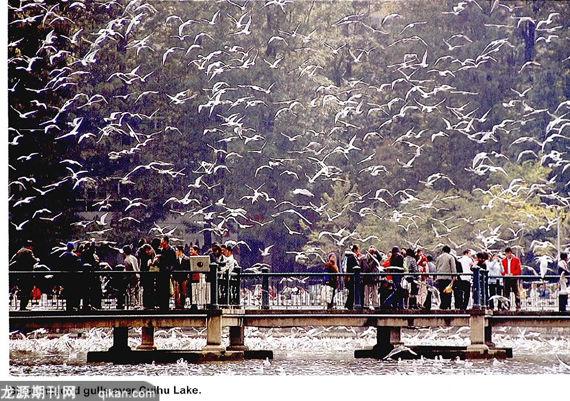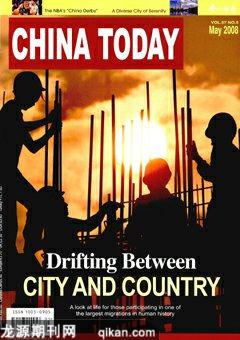A Diverse City of Serenity
staff reporter ZHANG XIWEN
YUNNANS provincial capital Kunming is, by any measure, a blessed city. Over the past 7,000 years it has been spared significant disasters of any kind, and the year-round spring-like weather nurtures a lush, enticing environment full of opulent produce. All in all, Kunming residents have long enjoyed a carefree life in laidback surroundings, which perhaps explains the locals love of art and flowers.

Locals affection for flowers in fact stretches back over many centuries. During the rule of the Dali Kingdom (937-1253) a young emulous king conceived the idea of surpassing the city scenery of Luoyang, an economic and political hub of the more prosperous Central Plains. He planted 24 species of yellow flowers on the river bank, and 24 species of white flowers under a bridge in Kunming. He then became obsessed with writing poems in homage to the splendid scene he had created. These distractions from the rule of state eventually led to his overthrow, but Kunming residents romantic interest in flowers hasnt diminished since. Even the pails which Kunming farmers use to convey fertilizer to their fields are painted with floral patterns.
As well as playing an aesthetic function, the masses of blooms across Kunming constitute a major source of the citys revenue – Kunming is one of the biggest flower producers in China. Shangyi Street in the downtown area, and Dounan, 18 kilometers from the town center, are the citys two major flower markets. Its said flowers are as cheap and as indispensable to life as vegetables in Kunming. The former nourish the mind while the latter sustain the body.
Its not just flowers that lend Kunming its color however. Yunnan Province is home to 26 of Chinas 56 ethnic groups. Many can be found in Kunming, lending the city a multihued diversity. Fifteen percent of Kunmings population of 5 million comprises ethnic minorities with distinct languages, cultures and religions. The citys religious heritage is particularly varied. In addition to the five largest faiths – Buddhism, Taoism, Islam, Catholicism and other forms of Christianity – there are a good many indigenous ones, such as the worship of Benzhu among the Bai people and the worship of Dongba by the Naxis.
Kunmings free and balmy atmosphere also breeds creativity in the arts. The Loft Art Community, a grouping of artists often compared to Soho in New York, has emerged in an abandoned industrial zone in west Kunming. It now comprises a large collection of galleries and studios hosting year-round exhibitions of paintings, installations and sculptures. Two big names among the group are Shanghe Chejian (Upper River Workshop), a studio of experimental art, and the Jingpin Gallery, the center of the areas art trade.
Tang Zhigang, a co-founder of the Loft Art Community, declares, “The purpose of establishing this community is to promote exchanges between traditional and contemporary art, as well as between East and West, so that no parties will be confined to their own terrains and left to indulge in self-admiration.” The Loft Art Communitys open spirit is emblematic of Kumnings atmosphere as a whole.

